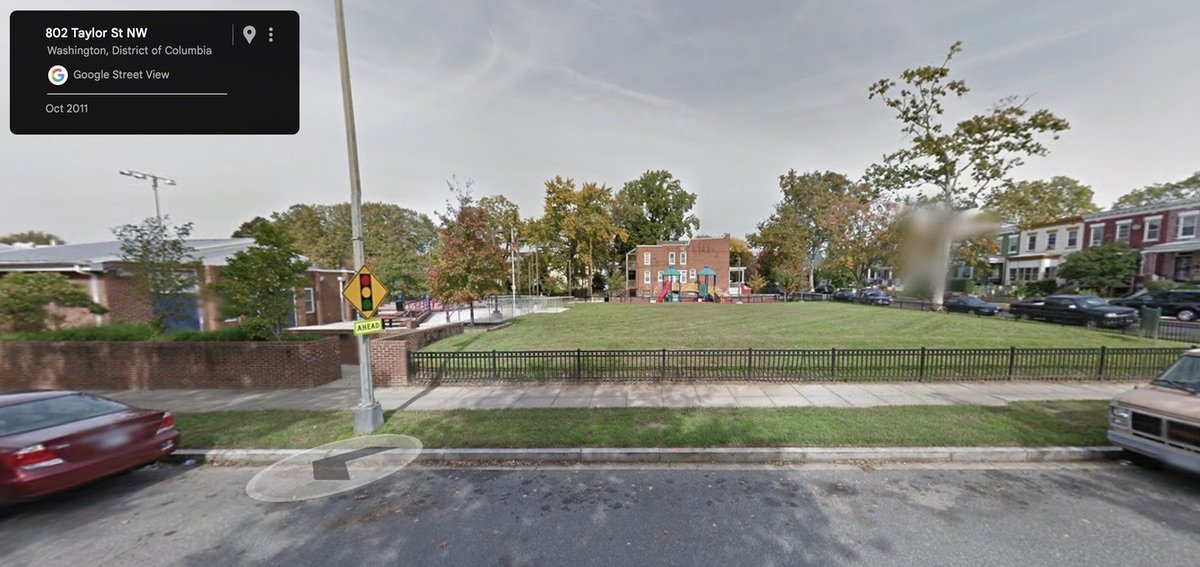Community members see personal impacts of crime, despite decreasing violent crime rates
/MPD data suggests the Petworth region has seen a 2% decrease in violent crime and a 12% reduction in homicides.
by Austin Schott
A neighbor moved her family to Petworth in January 2020. She lives near what she refers to as a “commonly known drug house” and cites that there have been multiple shooting or shots fired in the past couple months, often in the middle of the day.
“We’re not surprised anymore when we hear gunshots,” she said. “It’s obviously very upsetting. It’s daylight, we’re all home doing our Zoom meetings in the afternoon and we hear shots… Shootings could happen at any time and anywhere. I don’t feel safe going out at night to walk my dog… dropping off my kid at daycare could be dangerous.”
Metropolitan Police Department’s (MPD) Captain John Terry, meanwhile, explained that the MPD sector that includes Petworth has actually seen a 2% decrease in violent crime and a 12% reduction in homicides. In fact, according to MPD crime cards, violent crime is down across all of Ward 4 compared to last year.
That being said, Petworth residents still feel the day-to-day impact of crime in our neighborhood.
The neighbor described one incident that happened right outside her child’s daycare in February. “It was around 10 in the morning. There were shots fired right in front of the daycare right around the time when a lot of kids are leaving the classrooms to go outside for their walks. Luckily, it happened right before [children left the classroom]. There was police tape blocking off the daycare afterwards.”
I asked her if she thought about moving. Her response? “Yes, absolutely… I think we’ve passed the tipping point for us. We can’t stay here for the long haul.”
She voiced frustration with MPD’s response to violent crime. She attended a recent community meeting with law enforcement representatives and community leaders, but she chalked up their response in the meeting to “just a lot of rhetoric.”
She noted police response to a separate incident amounted to them setting up a camera near the location of the incident for a few weeks, but then a couple of weeks later they moved it away again. “So what? It’s all cleaned up now?” she asked, befuddled.
“It’s true that following an offense in an area, we do generally detail an officer to a ‘short beat’…patrolling that area both in the vehicle and on foot,” Captain Terry said. But he cautioned that their response is not limited to the temporary stationing of officers.
MPD caution tape at a Petworth area crime scene.
“Depending on the circumstances, we also call on several other resources. Our Crime Suppression Team will often conduct additional enforcement, to include proactive interdiction activities. This can also be bolstered by having our Violent Crime Suppression Division deploy their most appropriate assets (Community Focused Patrol Unit, Narcotics Enforcement Unit, etc) to assist. This has been successful, at least short term, both last summer in the Petworth area and more recently in the 14th Street and Spring Road area.”
Meanwhile, Petworth resident Beena Patel had another troubling incident to share. She detailed for me that one individual has been verbally harassing and threatening children, parents and nannies at the Petworth Recreation Center and surrounding playground.
“Two days after the Uvalde shooting, my nanny came home and said that [an individual] had been threatening to shoot and kill all the nannies and the kids… and formed a gun with his hands,” she said. “Then he did it again the next day.”
She said the individual who made the threats is a known person in the neighborhood.
Patel crowd-sourced the information to identify what else she could find out about this individual. In response, several Petworth community members contributed to a shared Excel spreadsheet, obtained by Petworth News, where folks reported instances of harassment from this same individual, including indecent exposure, damage to property and threats to kidnap children. At least five instances have been formally reported to the police.
Patel alleges that the individual was arrested on several instances, including for a prior assault. However, according to Patel and other community members in Petworth, the Assistant US Attorney in charge of the case has continuously declined to press charges, so the individual has repeatedly been released, although he was served with a one-year barring notice restricting him from access to the playground. The Office of the US Attorney for DC did not respond to requests for comment.
Another neighbor, who was well aware of the case, clarified, “It’s not like we want this guy to rot in jail, but it’s like, even if we wanted to get mental health support services, it’s not possible.”
Similarly, Patel maintained strong opposition to over-policing, but insisted there should be a response to prevent future instances of this individual “threatening to kill people and children.”
The National Institute for Criminal Justice Reform released a report in 2021 that found that 70% of DC’s gun violence is committed by a group of about 500 identified people, often due to personal disputes.
David Muhammad, the Executive Director of the institute, told NPR in February that nearly half of those personal disputes involved people who were connected to a group. It’s not “What most people conjure gang-on-gang warfare,” he said. “It might be, ‘We’re fighting over a young woman. You’re now dating my ex-girlfriend and I’m upset about it. That’s what we’re fighting over, but a risk factor — as well as something that exacerbates the conflict — is that we’re also both in crews.’”
Lashonia Thompson-El, Executive Director at community-based organization, Peace for DC, agrees. She suggests much of the crime stems from conflicts between neighborhood crews, with crews issuing messages and threats through music online. She cautions that there is some locally-sourced music that you need to “turn down” depending on where you’re driving because it can associate you with one side of a conflict.
Peace for DC’s Lashonia Thompson-El says Cure the Streets partners continued to interrupt violence throughout the pandemic. (Photo: Peace for DC)
She adds that social media messages encourages crime. “Young people actually like being on video [when committing acts of violence]. They’re recording themselves.”
She suggests the stress, anxiety, idle time and economic uncertainty surrounding the pandemic aggravated the crime situation in the city.
DC’s next Attorney General, Brian Schwab, wants to increase funding to the “Cure the Streets” violence interrupter program run through the Office of the Attorney General to help halt cycles of crime that erupt between crews.
Schwab, in an interview with Petworth News, explained the data-based program: “There are cycles of violence that occur where often times you have trauma that leads to a violent act that leads to a retaliatory violent attack, which creates a cycle. There are moments in time, typically after a shooting, where there is an opportunity to try to interrupt that cycle. Violence interrupters are folks that are… trying to interrupt that cycle. Sometime it’s going to the hospital where the victim and the families are to try to quash the ‘beef’ or quiet the ‘beef.’ Sometimes it’s hearing that someone is coming after someone else and trying to keep parties apart.”
Cure the Streets is a hyper localized program with 10 specific sites, including in Ward 4. Petworth News reported in December last year on the program’s expansion to Petworth.
Regarding the effectiveness of the program, Schwab says, “My sense is anecdotally it is working. It is slowing some of the violence, it’s quashing some of the ‘beefs.’ But it’s very hard to measure how many homicides didn’t happen.” But Schwab insists he needs to look at the data before he can give a thorough report.
Similarly, Thompson-El, who formerly worked with the Cure the Streets team, testified to the impact of the program. “I’ve seen and heard about multiple mediations and nonaggression agreements,” she told me. “I’ve seen people turn their lives around.”
Ameen Beale, Violence Reduction Program Analyst with the AGO’s office, cautions against judging the effectiveness of the program in Petworth specifically just yet.
“[The Petworth program has] only been operating for a couple of months at this point,” he told me. “They underwent a huge task of implementation because they have to recruit credible people [as implementers], from the community that have experiences with the high-risk population. [They are] developing relationships with people that have the highest likelihood of being involved in these conflicts.”
Meanwhile the program as a whole is still in the pilot phase, so the effectiveness across the city hasn’t been evaluated.
Thompson-El recognizes that violent crime in DC increased in 2020 and 2021, but she said the problems would be much worse without the program.
The Office of Neighborhood Safety and Engagement (ONSE) under the Mayor is a very similar violence interrupter program. In addition to the city’s violence interruption programs, community-based organizations play a major role in interdicting cycles of violence. Peace for DC hosts the DC Peace Academy where students from across community-based organizations learn skills on how to facilitate peaceful interventions, process trauma or help folks regulate their emotions through cognitive behavioral therapy.
Peace for DC hosts the DC Peace Academy where students from across community-based organizations learn skills on how to facilitate peaceful interventions. (Photo: Peace for DC)
Others told me the value of collaboration with a variety of stakeholders. Cure the Streets is “a tool in the belt” of addressing crime, Beale said. “There has to be a combination of parties that have to work together… that includes community partners, NGOs, everything.”
Captain Terry said that he recognizes that “Even our best police work, efforts and arrests may only provide short-term relief to a neighborhood. To truly make any long-term impact, we need the help of our city agency partners to address the underlying problems that allow for violent crime to fester.”
Community members agree. One neighbor said there shouldn’t be a one-size fits all approach, but rather a combination of violence prevention alongside prosecution of violent acts.
While the Cure the Streets program may offer data-driven interventions and other actors are engaging the most-likely offenders, residents still struggle to feel safe in our neighborhood.
“I’ve lived in shady parts of San Francisco, in shady parts of New York City. I’ve spent time in conflict zones and in developing countries,” she said. “And I’ve never felt as unsafe as I do living in DC, specifically in Petworth.”



















